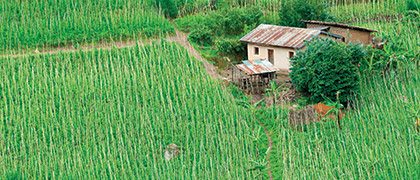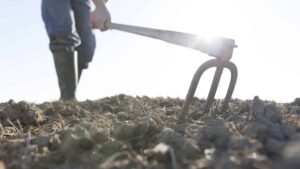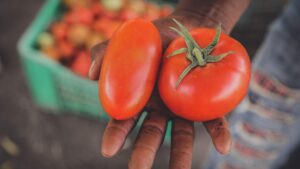An in-depth overview of the global seed industry. From plant breeding regulatory progress in Europe to new developments in building a healthier seed industry in Rwanda.
Status Europe

The European Seed Association says it welcomes MEP Paulsen’s initiative and the attention the Parliament is giving to this very strategic sector for Europe, as well as the opportunity to start an informed and constructive debate on the value and role of plant breeding in modern societies.
“Without an effective and competitive plant breeding sector, we seriously reduce our options to respond to agricultural and societal demands,” says Garlich von Essen, secretary general of ESA.
According to von Essen, the report shows that Europe needs to build on its competitive advantage and continue to invest in research, development and the use of new plant breeding techniques and to provide support to long-term partnerships between government, industry and research organizations to stimulate innovation.
“We are working very hard with EU farmers and the public research sector within the European Technology Platform ‘Plants for the Future’ to develop a Research, Innovation and Education Action Plan. We look forward to putting these forward later this year,” says von Essen.
The ESA says it specifically welcomes the very forward-looking recommendation to the European Commission to develop an overall policy strategy on agricultural inputs, especially in relation to plant breeding.
“We look forward to taking up some of the recommendations contained in the report and continuing this debate with the European Parliament in order to achieve a policy framework that enables Europe’s breeders, seed producers and farmers to contribute to food security for Europe’s 500 million consumers and a growing world population,” von Essen says. “We very much appreciate the broad support for this report, sending a strong signal from Parliament to the European Commission and Council that plant breeding is the key science for the future of agriculture in Europe.”
Status India
An international effort has been launched to develop quality standards for key products of the multi-billion dollar spice and herb trade. The sector has been enjoying rapid growth for several decades on the back of burgeoning demand from the booming economies of Asia and elsewhere, as well as increased recognition of the health and culinary benefits of herbs and spices.
In response to the sector’s growth and the extraordinary diversity of the trade and its products, the global food standards body known as the Codex Alimentarius Commission last year established the Codex Committee on Spices and Culinary Herbs. The first meeting of the CCSCH was held in Kochi, India in early February.
The new committee is hosted by India and is responsible for promoting worldwide quality standards for many of the most important spices and culinary herbs.
“By developing such standards, Codex wants to contribute to the safety, quality and fairness of the international spice and herb trade,” says Ren Wang, assistant director general of Food and Agriculture Organization’s Agriculture and Consumer Protection Department. “Once clear internationally-accepted standards are established, consumers can trust the safety and quality of the spices and herbs they buy. Importers can trust that the spices and herbs they order and then have delivered will be in accordance with their specifications. Perhaps most importantly, the millions of smallholder farmers who grow spices and herbs for a living can see more clearly what they should be growing and to what standard.”
According to the FAO publication Spices and Herbs for Home and Market, there are around 50 spice and herb plants of global trade significance, but many other spices and herb crops are expanding and offer good returns to small-scale farmers.
Status Pakistan
Pakistan continues to face the threat of Ug99, mainly due to the lack of resistant varieties available in the country, says Ian Winborne, a plant health adviser with the U.S. Department of Agriculture who is based in Islamabad.
However, wheat growers now have two solutions — Pakistan introduced NARC-11 in 2011 and PAK-13 last October. The two Ug99-resistant varieties were first developed at the International Maize and Wheat Improvement Center in Mexico and later brought to Pakistan for testing by the Pakistan Agricultural Research Centre and provincial agricultural research stations. Trial data from 64 research stations proved the survival of the two varieties, and consequently, the government released them to farmers.
Winborne says these varieties are high yielding and adapted to different environments in Pakistan. NARC-11 is suitable for irrigated areas while PAK-13 performs better in areas of dry land farming.
USDA, in collaboration with PARC and research institutes in various provinces, is continuing a wheat productivity enhancement project to protect and enhance the productivity of wheat in Pakistan, with particular focus on wheat rusts.
The success of the two new varieties has given rise to the hope that there is a solution to Ug99. Starting next wheat season, work will start to replicate the two varieties so that enough quantities of wheat are made available, says Winborne.
Status Rwanda
In early January, a roundtable discussion was held by Rwanda’s Ministry of Agriculture and Animal Resources and the Syngenta Foundation for Sustainable Agriculture to discuss the current challenges of Rwanda’s seed sector and propose concrete solutions to bringing seed investment to the country.
The Government of Rwanda has expressed the need to become more self-sufficient in seed production, as well as to spur more involvement from the private sector in order to gradually privatize the industry for sustainability. Key stakeholders, including public officials, international seed multipliers and investors, gathered to begin a conversation about the current status of Rwanda’s seed industry.
Government of Rwanda officials, including Minister Agnes Kalibata and other MINAGRI and Rwanda Development Board staff were able to meet leading private seed investors who have had experience around the world, and discuss with participants a draft plan to meet key future seed needs of Rwanda.
According to Minister Kalibata, involving the private sector is not only meant to secure livelihoods for rural farmers and increase productivity, but is a business opportunity for seed companies. With Rwanda’s agro-climate and topography, it holds huge potential for the growth of maize seeds, Irish potato seeds and vegetable seeds.
“How can we get the private sector to be a part of the process right from the beginning [of the value chain]?” asked Minister Kalibata, in reference to moving forward.
With knowledge of and relationships with both private sector companies and the Government of Rwanda, Syngenta Foundation for Sustainable Agriculture will be acting as a key intermediary in facilitating deals between the Government of Rwanda and interested leading private seed companies in the move towards an improved seeds industry. All stakeholders will be encouraged with increased communication and co-ordination for a successful transition. SFSA has already begun working with players such as One Acre Fund, a social enterprise that works directly with farmers, providing inputs as well as training.
There is huge interest and potential in Rwanda in the development of a widely successful seed industry, a country with an “appetite for growth and commitment for the sector,” as many participants noted following the roundtable.















